Everyone knows zoysia grows slower than bermuda, except when ...
… it doesn’t. In fact, there is one variety of manilagrass (Zoysia matrella) that consistently grows faster than bermudagrass in Southeast Asia. I’ve had occasion to study and measure this grass, and there is no doubt that it grows faster than bermuda here.
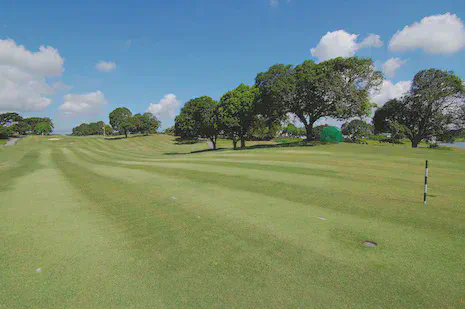
Some recent measurements have provided a bit more information. The grass I refer to is nuan noi, the manilagrass variety that is grown on nurseries in Thailand, that I’ve seen growing as far east as the Philippines, south to Singapore and Bali, and west to Dhaka.
Many golf courses in Thailand were planted to bermudagrass when they were constructed in the 1990s and through a natural conversion process, the nuan noi has taken over. Courses such as Windmill, Green Valley, Thana City, and Phoenix Gold have all been through this transition.
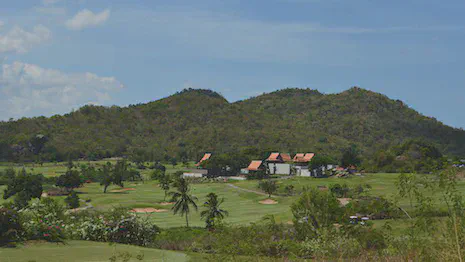
I’ve measured how fast this grass spreads, both when it is invading bermudagrass, and when it is establishing on bare ground without competition from other grasses. Here are four separate measurements.
1. At the ATC research facility
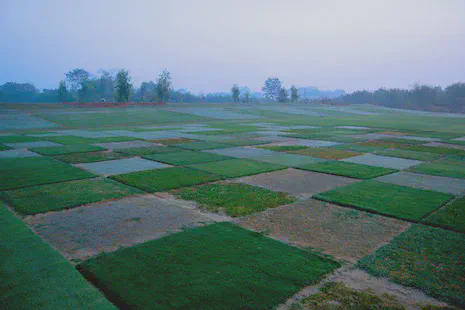
More than 50 varieties of grass from various species were grown at the ATC research facility near Bangkok from 2006 until 2009. One of the interesting observations was just how quickly nuan noi manilagrass grew into Tifway 419 bermudagrass. Remember, people keep telling me that bermuda grows faster, and zoysia grows slower, but as you can see here, the invasion was only happening in one direction. Which grass is growing faster?
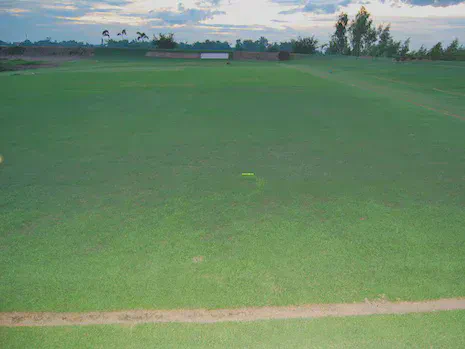
From the plot border, to the farthest point of invasion, was 2 meters at this point, and the grass had been planted for 2 years. This is a rate of 1 meter per year, or 8 cm per month.
2. In Samui
The Santiburi Samui CC opened at the end of 2003. It was planted to seashore paspalum, except for the Tifeagle greens.
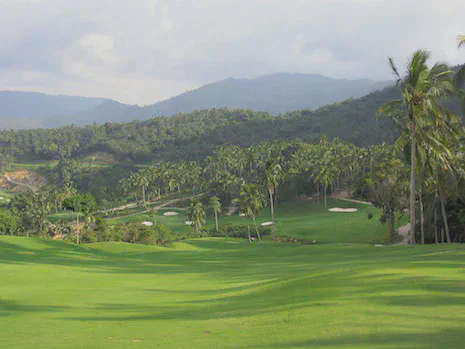
Most of the seashore paspalum on the fairways and roughs died during a drought in 2005. Where the paspalum died, bermudagrass took its place. I first noticed a few small patch of manilagrass on fairways at Santiburi Samui in January 2007. Since then, the manilagrass has continued to expand into the bermuda, with the largest patches having an area (as of November 2014) of about 140 m2.
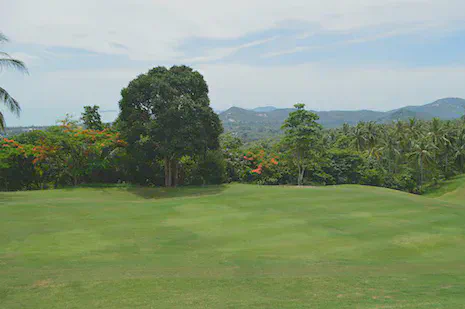
Assuming that the size was one small plant in January 2007, and the patch of manilagrass is now 140 m2 in size, gives an expansion rate of 7 cm per month.
Based on the measurements at the ATC research facility and at Samui, the rate of expansion into established bermudagrass was 7 and 8 cm per month, respectively. This expansion rate is useful for doing planned fairway conversions, both to estimate how long it will take for nuan noi to take over, and to calculate an appropriate spacing for planting.
3. In a greenhouse experiment
Nuan noi manilagrass, Tifway 419 bermudagrass, and Salam seashore paspalum were established from stolons in a sand rootzone and the growth and the nutrient uptake were measured in a greenhouse experiment in Thailand. After the grass was already grown in, during the duration of the fertilizer and clipping yield experiment, the manilagrass had 52% more clipping yield than did the Tifway 419 bermudagrass.
But before that, it grew in faster from stolons also.
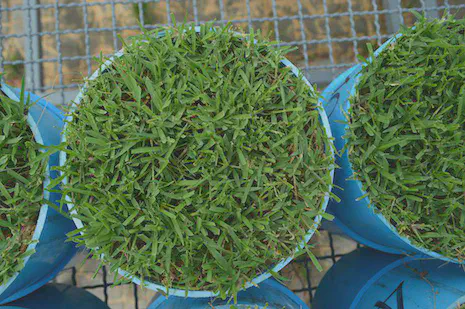
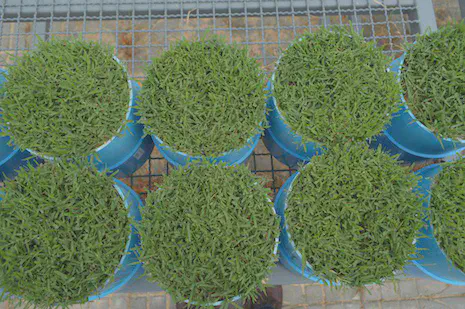
The manilagrass had grown in after 42 days (6 weeks). The planting rate of the stolons was 144 g/m2.
4. At a sod farm
I’ve explained the process of manilagrass production on sod farms near Bangkok in this video, where the grass goes from planting to harvest in about 6 weeks.